Selection of light sources for industrial premises
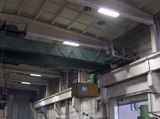 Industrial lighting systems are traditionally very energy intensive. In connection with this fact, a competent approach to energy saving in enterprises can have a strong economic effect. And the most important step towards reducing energy consumption is the transition to modern, more economical light sources. These light sources must have a significant working resource so that for ten, and perhaps more, their parameters remain at the required level.
Industrial lighting systems are traditionally very energy intensive. In connection with this fact, a competent approach to energy saving in enterprises can have a strong economic effect. And the most important step towards reducing energy consumption is the transition to modern, more economical light sources. These light sources must have a significant working resource so that for ten, and perhaps more, their parameters remain at the required level.
Today, gas discharge lamps are most often used for industrial and street lighting, although LEDs have already quickly entered the market. In terms of light quality, LEDs now match the best traditional light sources, both in terms of efficiency and the quality of light emitted.
Discharge lamps for industrial applications are classified into sodium, mercury and metal chloride:
-
DNAT — high and low pressure sodium gas discharge lamps;
-
DRI — mercury metal halide lamp;
-
DRL — high pressure mercury arc lamps.
Comparison of light sources HPS low pressure HPS high pressure DRL DRI LED lamp Profitability High average arithmetic average arithmetic average arithmetic High Color rendering poor good good excellent excellent Luminous efficiency, Lm / W Up to 200 Up to 150 30-60 70-95 Up to 150 Period of operation up to 32,000 hours up to 32,000 hours up to 12,000 hours up to 15,000 hours up to 80,000 hours Possibility of smooth power regulation No No No No Yes Ignition, ignition long long long long fast Presence of mercury No little or no mercury Yes Yes No
DNAT
Sodium arc tube lamp. These lamps use a gas discharge in sodium vapor to produce light during operation. Sodium lamps are used in street lighting systems where they emit a bright orange light. Lamps of this type are gradually replacing mercury lamps.
Sodium lamps belong to the group of the most efficient light sources; in terms of high luminous efficiency, they surpass other types of gas discharge lamps of all known today. Another important advantage is the very low reduction of the luminous flux during the entire service life, which is more than 28,000 hours.
It is important to note, however, that low-pressure sodium lamps operate at maximum light output only in warm weather, while high-pressure sodium lamps contain a sodium mercury compound called sodium amalgam as a filler. From this point of view, a strictly positive answer cannot be given that sodium lamps are more environmentally friendly than mercury lamps.That is, from the point of view of ecology, their position is controversial.
Sodium lamps are of two types: high and low pressure NLVD and NLND.
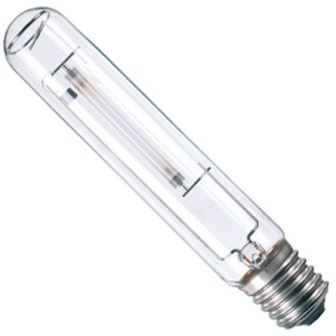
NLVD
High-pressure sodium lamps emit light that can accurately distinguish colors over a wide range, except at short wavelengths where the color is slightly dull. Compared to arc lamps, sodium lamps have the highest efficiency of approximately 30%. They are slightly lower than NLND in terms of light output, and this figure is an average of 80 lm / W.
The use of different mixtures of gases in combination with different phosphors, as well as changing the pressure inside the bulb, can improve the color rendering of sodium lamps at the cost of, however, reducing the luminous flux and efficiency. In some lamps, a mixture of sodium and mercury serves as a filler to improve the quality of lighting, but this is a harmful technique from the point of view of ecology.
For sodium lamps, the stability of the supply voltage is important, because when the supply voltage decreases, the operating parameters of the lamp deteriorate. When choosing sodium lamps as light sources for industrial use, care must be taken that the voltage will change slightly during lamp operation.
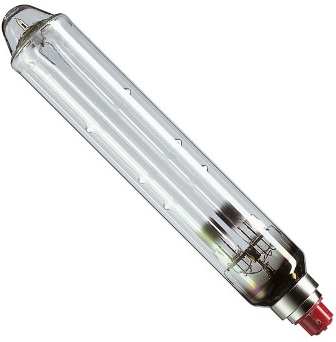
NLND
Low-pressure sodium lamps for street lighting have a maximum light efficiency of 100 lm / W on average. They are ideal for streets, they give a soft yellow light, but their color rendering is not high enough, which is why they remain most relevant only for streets where no it is so important to accurately distinguish the colors of objects.If a low-pressure sodium lamp is installed in the room, it will be almost impossible to distinguish the colors, the green color will turn out to be dark blue, for example, and the decorative elements of the room will lose their true appearance.
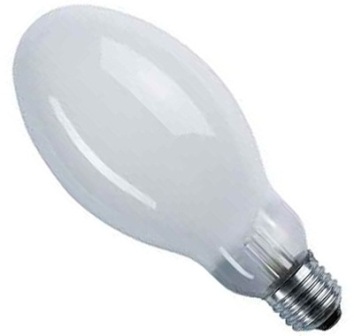
DRL
High-pressure mercury-arc lamps are often used in lighting systems in factories, workshops, industrial facilities, as well as in streets, where there are not particularly high requirements for the quality of color rendering and where the color temperature is not so important. In general, the color rendering of mercury lamps is characterized as average. The installation and maintenance costs of mercury arc lamps are minimal, but remember that the inside of the bulb contains mercury vapor at a pressure of up to 105 pascals.
The lamp is a cylinder with a base, in the center of the cylinder is a mercury-quartz burner in the form of a tube, which is filled with argon with the addition of mercury. An electric discharge in the mercury vapor creates a luminous flux. Approximately 40% of the radiation falls on the ultraviolet part of the spectrum, and thanks to the phosphor that covers the inside of the lamp bulb, the radiation of the lamp acquires the character of visible light.
Here, as for sodium lamps, a stable supply voltage is important, if the mains voltage drops or rises by 10%, the luminous flux will increase or decrease by 20%. When the supply voltage drops to 20% of nominal, the lamp will probably not light, and if it does, it will most likely go out.
As mentioned above, the general areas of application of mercury arc lamps are: lighting workshops, warehouses, open areas, industrial premises of various enterprises, as well as lighting places, streets, yards, etc.
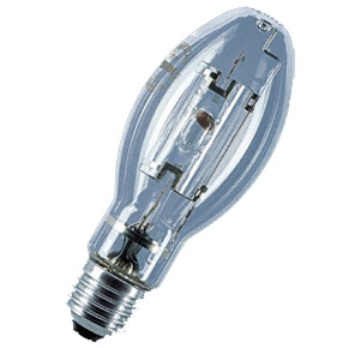
DRI
The letter «I» in the abbreviation DRI stands for: with emitting additives. These are metal halide mercury arc lamps (MHL), also related to gas discharge lamps. Externally, they can be confused with incandescent halogen lamps, since they are similar in size and both serve as point sources of light. Additives here in addition to mercury: iodides of indium, thallium and sodium, which allow to increase the light output. The luminous efficiency of metal halide mercury lamps is approximately in the range of 70 to 95 lm / W and more.
The quality of color reproduction here is high. The white light emitted by a metal halide lamp can vary slightly in color temperature from lamp to lamp, but the characteristic color is white. A cylindrical or ellipsoidal bulb is typical for this type of lamp. A ceramic or quartz burner is mounted inside the flask, in which a discharge burns into vapors of metal and metal iodides. The service life of such a lamp is on average 8000 hours.
By changing the composition of impurities in DRI lamps, a monochromatic glow of the desired color, for example green or other, is achieved. This approach makes it possible to produce lamps for decorative lighting, which are widely used in architecture.
Typical applications for mercury metal halide lamps are: colored lights for buildings, signs, shop windows, office lighting, street lighting systems, stadium lighting systems.
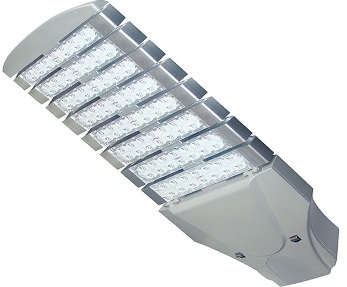
LED lamp
An alternative to gas discharge lamps — LED lamp… LEDs allow you to directly convert electric current passing through a semiconductor into light.By choosing the chemical composition of semiconductors and phosphors, the necessary light characteristics are obtained. The spectrum of radiation is narrow and without ultraviolet radiation. Today, the transition to LED lighting fixtures is the most promising way to save energy in industrial lighting.
LED lighting turns out to be very economical and environmentally friendly compared to gas discharge lamps. LEDs do not need to be disposed of and do not require special maintenance.
The life of LED light sources reaches 60,000 hours of continuous operation, after which the luminous flux will be reduced by half, but the light source will continue to work. And in gas-discharge lamps, after one year, the luminous flux decreases by about 20%. The color temperature of LED light sources remains stable for many years.
To power LED lighting fixtures, a pulse converter is always used, which stabilizes the voltage in the LEDs even with unstable mains voltage. If the input is from 170 to 264 volts, the LED luminaire, thanks to an individual stabilizer, will keep the light characteristics stable.
